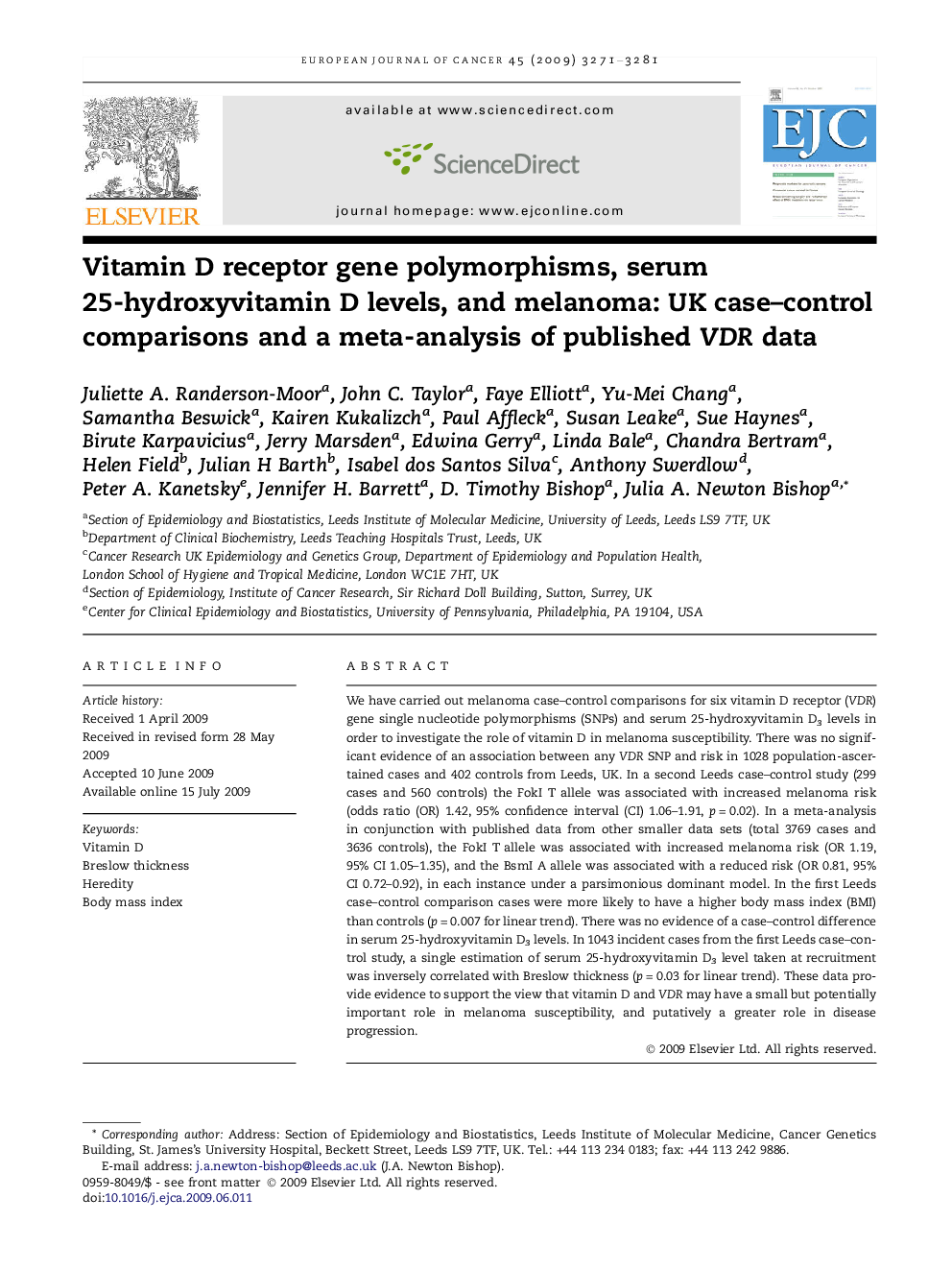| Article ID | Journal | Published Year | Pages | File Type |
|---|---|---|---|---|
| 2123441 | European Journal of Cancer | 2009 | 11 Pages |
We have carried out melanoma case–control comparisons for six vitamin D receptor (VDR) gene single nucleotide polymorphisms (SNPs) and serum 25-hydroxyvitamin D3 levels in order to investigate the role of vitamin D in melanoma susceptibility. There was no significant evidence of an association between any VDR SNP and risk in 1028 population-ascertained cases and 402 controls from Leeds, UK. In a second Leeds case–control study (299 cases and 560 controls) the FokI T allele was associated with increased melanoma risk (odds ratio (OR) 1.42, 95% confidence interval (CI) 1.06–1.91, p = 0.02). In a meta-analysis in conjunction with published data from other smaller data sets (total 3769 cases and 3636 controls), the FokI T allele was associated with increased melanoma risk (OR 1.19, 95% CI 1.05–1.35), and the BsmI A allele was associated with a reduced risk (OR 0.81, 95% CI 0.72–0.92), in each instance under a parsimonious dominant model. In the first Leeds case–control comparison cases were more likely to have a higher body mass index (BMI) than controls (p = 0.007 for linear trend). There was no evidence of a case–control difference in serum 25-hydroxyvitamin D3 levels. In 1043 incident cases from the first Leeds case–control study, a single estimation of serum 25-hydroxyvitamin D3 level taken at recruitment was inversely correlated with Breslow thickness (p = 0.03 for linear trend). These data provide evidence to support the view that vitamin D and VDR may have a small but potentially important role in melanoma susceptibility, and putatively a greater role in disease progression.
